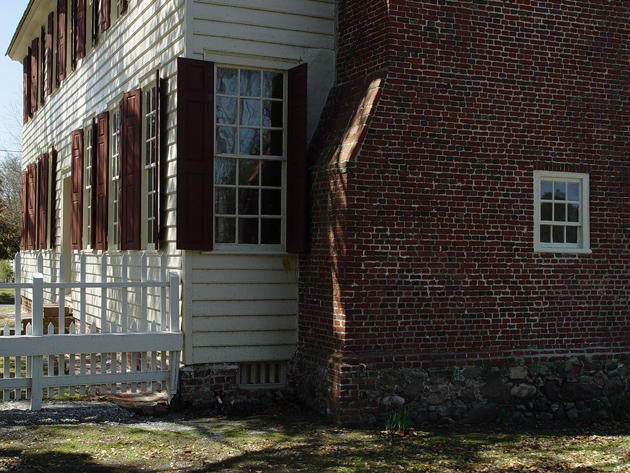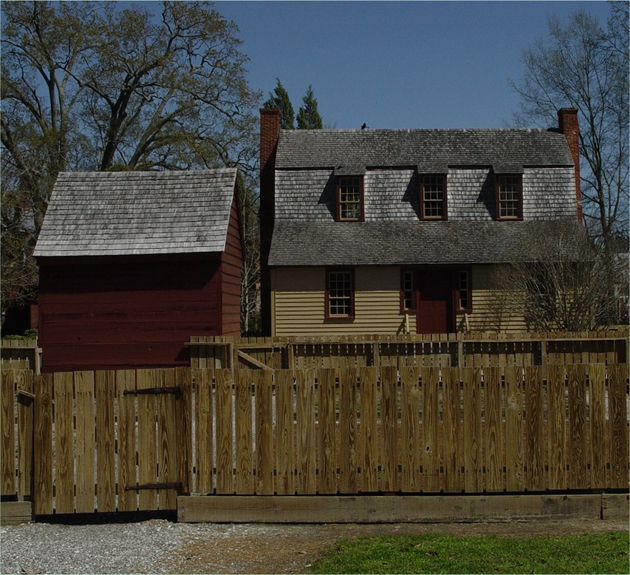Publisher's note: We believe the subject of history makes people (i.e., American people) smarter, so in our quest to educate others, we will provide excerpts from the North Carolina History Project, an online publication of the John Locke Foundation. This sixth installment is provided courtesy of the North Carolina History Project, and re-posted here with permission from NC Historic Sites.
The first settlers were French Protestants from Virginia. Among early inhabitants were John Lawson, surveyor general of the colony and author of the first history of Carolina (1709), and Christopher Gale, first chief justice of the colony.
By 1708, Bath consisted of 12 houses and about 50 people. Trade in naval stores, furs, and tobacco was important, and Bath became the first port of entry into North Carolina. In 1707, a grist mill and the colony's first shipyard were established in the town. A library sent to St. Thomas Parish in 1701 became the first public library in the colony. The parish also established a free school for Indians and blacks.
Early Bath was disturbed by political rivalries, epidemics, Indian wars, and piracy. Cary's Rebellion (1711) was an armed struggle over religion and politics in the colony. An epidemic of yellow fever and a severe drought occurred in 1711. The Tuscarora War between the weakened settlers and the powerful Tuscarora Indians followed immediately. Bath became a refuge for the surrounding area until the Indian power was broken. Bath was also the haunt of Edward Teach, better known as the pirate "Blackbeard." An expedition of the British Navy killed him in a naval battle near Ocracoke in 1718.
Later Bath offered a more peaceful, settled life. The first Beaufort County courthouse was built in the town in 1723. Construction of St. Thomas Church, the state's oldest existing church today, began in 1734. Ferry service was established across the Pamlico River, and a post road linked Bath to New Bern and Edenton. In 1751, Capt. Michael Coutanch, a merchant, legislator, and commissioner for Bath and Portsmouth, built what became known as the Palmer-Marsh House, Bath's oldest and in the colonial period its largest residence. Col. Robert Palmer, surveyor general, collector for the Port of Bath, and member of the Governor's council, later owned the house.
 The lower front facade of the palmer Marsh House in Bath is representative of the popular federal style architecture of that time: Above. photo by Stan Deatherage Click the picture to expand to as much as 1000 pixels wide in most expanded images.
The lower front facade of the palmer Marsh House in Bath is representative of the popular federal style architecture of that time: Above. photo by Stan Deatherage Click the picture to expand to as much as 1000 pixels wide in most expanded images.
The General Assembly met in Bath in 1743, 1744, and 1752. In 1746 the town was considered for capital of the colony. Governors Robert Daniel, Thomas Cary, Charles Eden, and Matthew Rowan made Bath their home for a time, as did Edward Moseley, long time speaker of the assembly.
In 1776 a new town, Washington, was formed 15 miles up the Pamlico River. When Beaufort County government moved there in 1785, Bath lost most of its importance and trade.
In the early nineteenth century, the Marsh and Bonner families and Jacob Van Der Veer added to the vitality of the town as merchants, shippers, and active citizens. Van Der Veer manufactured rope outside of town and was a partner with Joseph Bonner in an early steam sawmill. Bonner also operated a turpentine distillery.
 The rear of the Van Der Veer house in Bath's Center: Above. photo by Stan Deatherage Click the picture to expand to as much as 1000 pixels wide in most expanded images.
The rear of the Van Der Veer house in Bath's Center: Above. photo by Stan Deatherage Click the picture to expand to as much as 1000 pixels wide in most expanded images.
Bath was spared from Union occupation, common in coastal North Carolina, during the Civil War.
By the turn of the century, Bath had improved land transportation. Waterborne activities also increased as several large sawmills were operated nearby.
 The most iconic structure in Bath, North Carolina is the Bonner House at Bonner Point over looking Bath Creek: Above and below. photos by Stan Deatherage Click the picture to expand to as much as 1000 pixels wide in most expanded images.
The most iconic structure in Bath, North Carolina is the Bonner House at Bonner Point over looking Bath Creek: Above and below. photos by Stan Deatherage Click the picture to expand to as much as 1000 pixels wide in most expanded images.

Yet Bath remains a small village. Restoration efforts in Bath have saved the St. Thomas Church, the Palmer-Marsh House, Van Der Veer House (ca. 1790), and the Bonner House (ca. 1830). The original town limits are the boundaries for a National Register historic district.
The Palmer-Marsh House is a National Historic Landmark.
Sources:
Entry originally published at http://www.nchistoricsites.org/bath/main.htm

























